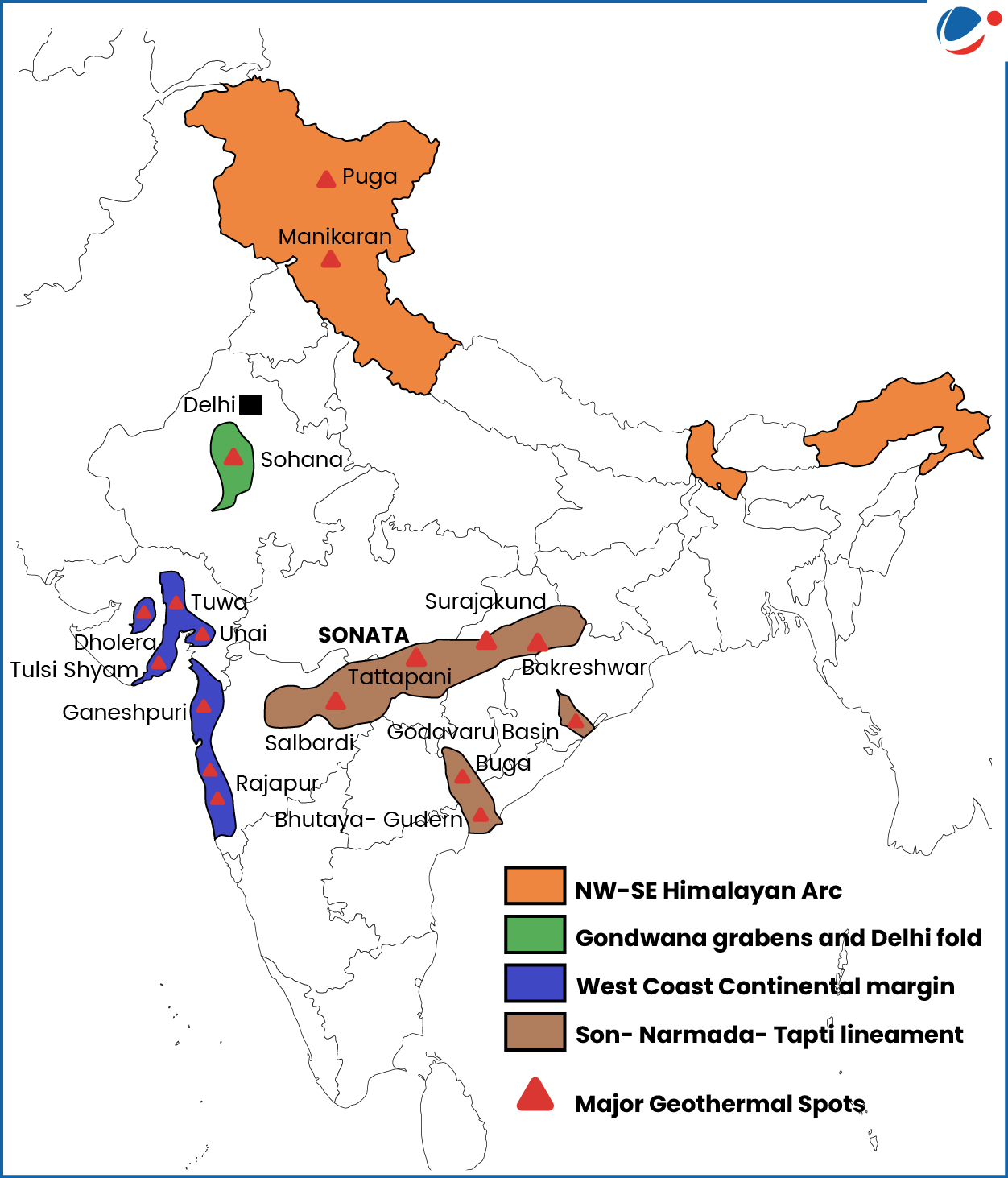It is drilled by the Centre for Earth Sciences and Himalayan Studies (CESHS) at Dirang in Arunachal Pradesh.
- The project is the result of international scientific collaboration between CESHS, the Norwegian Geotechnical Institute (NGI),Oslo, Norway, the Icelandic geothermal firm Geotropy ehf, and the drilling team from Guwahati Boring Service (GBS).

About Geothermal Energy
- Geothermal energy is heat energy from the earth—geo (earth) + thermal (heat).
- Geothermal technology extracts this energy/heat for direct heating and cooling, or converts it into electricity.
- This internal heat/thermal energy is generated from radioactive decay and continual heat loss from earth's formation.
- Advantages: Clean & inexpensive renewable energy, Ability to operate year-round, etc.
- Disadvantages: Possible land subsidence, high transportation charges of energy, Possible release of toxic chemicals, etc.
Step taken to promote Geothermal energy
- Geological Survey of India (GSI) published a report titled ‘Geothermal Atlas of India, 2022’, identifying potential geothermal sites.
- Renewable Energy Research and Technology Development Programme (RE-RTD) by MNRE to promote indigenous R&D for cost-effective renewable energy, including geothermal.
- Singareni Collieries Company limited (SCCL) has commissioned a 20 kW pilot geothermal power plant in Manuguru area of Bhadradri Kothagudem district in Telangana.



